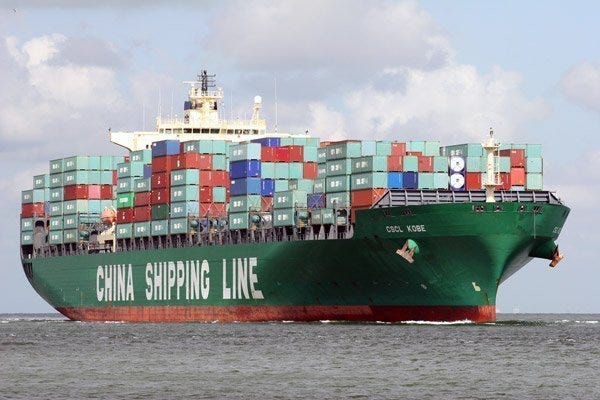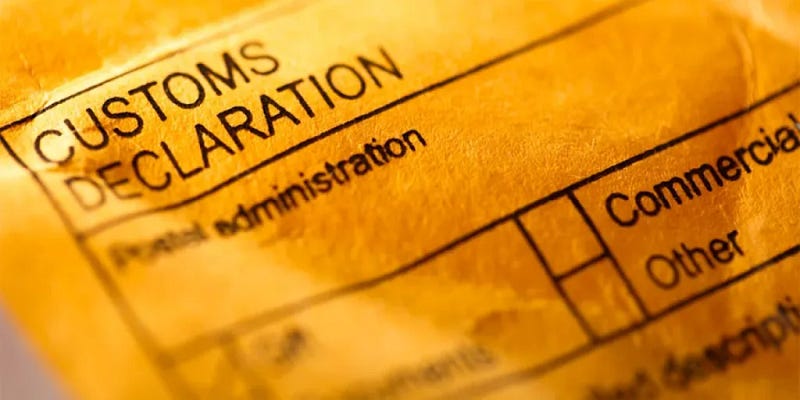Streamlining Your Supply Chain: A Guide to Shipping from China to Japan
The bustling trade route between China and Japan fuels the economies of both nations. As a business owner looking to tap into this lucrative market, navigating the intricacies of shipping from China to Japan becomes crucial. This comprehensive guide empowers you to make informed decisions, optimize costs, and ensure a smooth flow of goods across the East Sea.
Why Choose Shipping as a Transportation Method?

While air travel offers the fastest transit times, shipping remains the dominant mode of transport for China-Japan trade. Here’s why:
- Cost-Effectiveness: Sea freight boasts significantly lower costs per unit compared to air travel. This is ideal for bulkier, non-perishable goods where speed isn’t a primary concern.
- High Capacity: Ocean freighters can handle enormous volumes of cargo, making them perfect for large-scale shipments. This translates to economies of scale, further reducing your overall transportation costs.
- Diverse Options: Containerized shipping allows for flexibility. You can choose between Full Container Loads (FCL) for exclusive use of a container or Less-than-Container Loads (LCL) for sharing container space with other shippers, which is ideal for smaller consignments.
Key Considerations for Cost-Effective Shipping
While shipping offers inherent economic benefits, strategic planning can further optimize costs:
- Shipment Consolidation: Grouping smaller orders into larger shipments can qualify you for bulk discounts from freight forwarders.
- Incoterms Selection: Incoterms (International Commercial Terms) define responsibilities and associated costs between buyer and seller. Choosing the right Incoterm, such as FOB (Free On Board) where costs transfer upon loading onto the ship, can reduce your landed costs in Japan.
- Port Selection: Consider the distance between origin and destination ports. Shipping from Shanghai to Yokohama will be faster and potentially cheaper than routes involving more distant ports.
Understanding the Logistics of Shipping from China to Japan

The China-Japan shipping route is a well-oiled machine, but understanding the key players and processes is essential:
- Freight Forwarders: These logistics specialists act as intermediaries, handling documentation, customs clearance, and liaising with shipping lines. Choosing a reputable freight forwarder ensures a smooth and efficient shipping experience.
- Customs Clearance: Both China and Japan have customs regulations. Working with a freight forwarder ensures your documentation is in order to avoid delays at customs.
- Ocean Carriers: These companies operate the vessels that transport your cargo. Compare rates and services offered by different carriers to find the best fit for your needs.
Choosing the Right Shipping Method: Speed vs. Cost

The ideal shipping method depends on your priorities:
- Express Shipping: For urgent deliveries, courier services like DHL, FedEx, and UPS offer the fastest transit times (2–4 days) at a premium cost.
- Air Freight: A balance between speed and cost, air freight typically delivers within 3–7 days. This option is suitable for time-sensitive shipments that don’t warrant express costs.
- Sea Freight (FCL): The most cost-effective option for large shipments, with transit times ranging from 7–14 days depending on the route.
- Sea Freight (LCL): A budget-friendly option for smaller shipments, but expect longer transit times (up to 21 days) due to consolidation processes.
Choosing the right method requires careful consideration of factors like urgency, cargo size, budget, and your risk tolerance.
Shipping Documentation and Customs Requirements

Proper documentation is vital for smooth customs clearance:
- Commercial Invoice: A detailed document outlining the goods being shipped, their value, and HS Code (harmonized system classification code).
- Packing List: An itemized list of the contents in your shipment, including quantities, weight, and descriptions.
- Bill of Lading (BOL): A legal document issued by the carrier that serves as a receipt for your cargo and a contract of carriage.
- Certificate of Origin: May be required by Japanese customs to verify the country of origin of your goods.
Ensure all documentation is accurate and complete to avoid delays and potential penalties.
Tips for Smooth Shipping Operations
Here are some additional pointers for a seamless shipping experience:
- Accurate Labeling: Clearly mark your packages with recipient information, including complete addresses and contact details in both English and Japanese.
- Cargo Insurance: Consider cargo insurance to protect your shipment against loss or damage during transit.
- Track Your Shipment: Most freight forwarders and carriers offer online tracking tools to monitor your shipment’s progress.
- Build Relationships: Develop strong relationships with your freight forwarder and customs brokers. Clear communication ensures a more efficient shipping process.
Managing Shipping Delays and Challenges

Unexpected delays can occur. Here’s how to navigate potential disruptions:
- Proactive Communication: Maintain open communication with your freight forwarder. Early notification of any issues allows for proactive solutions.
- Contingency Plans: Develop contingency plans to address potential delays, such as identifying alternative shipping routes or having backup inventory in Japan.
- Force Majeure Clauses: Include force majeure clauses in your contracts, which outline actions taken due to unforeseen circumstances beyond your control (e.g., natural disasters, port closures).
Cost-Saving Strategies for Shipping from China to Japan
Beyond the methods mentioned earlier, here are additional strategies to optimize your shipping costs:
- Negotiate Rates: Freight forwarders and carriers often offer volume discounts. Negotiate rates based on your projected shipping volume.
- Free on Board (FOB) vs. Cost, Insurance, and Freight (CIF): Choosing FOB places responsibility for insurance and freight costs on the buyer upon loading in China. This can be cost-effective if you have reliable insurance providers and can negotiate favorable freight rates.
- Consolidate Suppliers: If you source from multiple suppliers in China, consider consolidating your goods at a central location before shipping to Japan. This reduces the number of shipments and potentially lowers overall costs.
- Inventory Management: Optimize your inventory levels to avoid unnecessary storage and transportation costs. Implementing just-in-time (JIT) inventory practices can significantly reduce holding costs.
By employing these strategies, you can streamline your supply chain and achieve significant cost savings.
Comments
Post a Comment